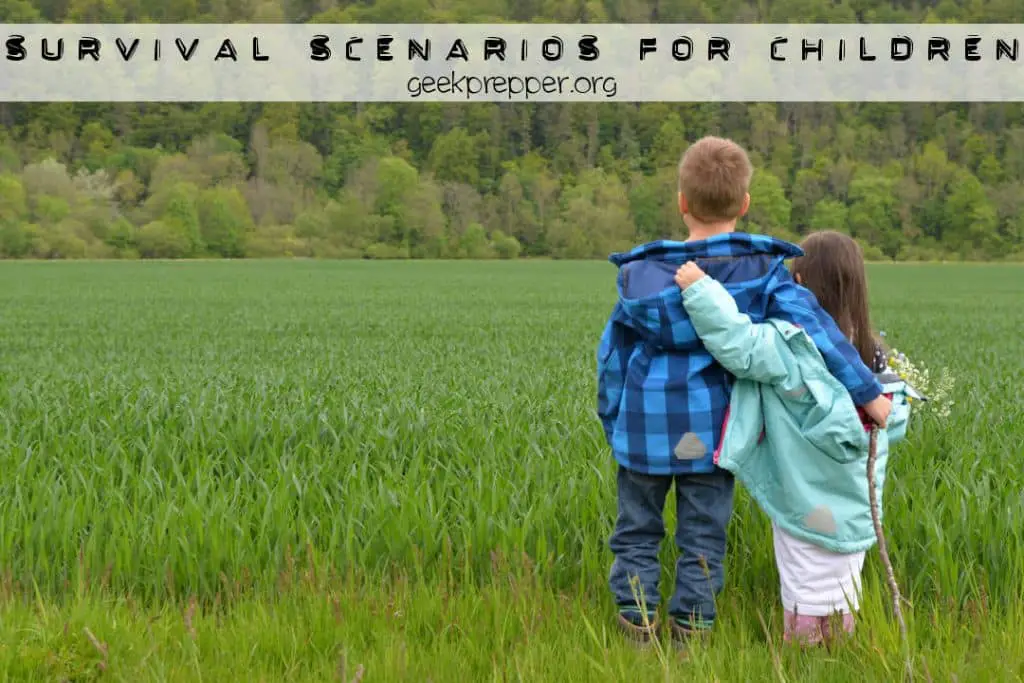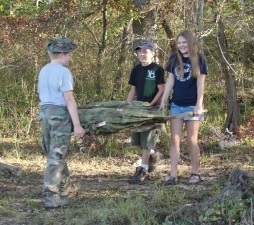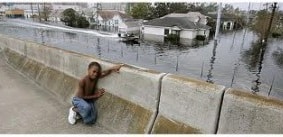Walk and talk with your children. Ask them questions that simulate survival scenarios for children.
It’s important to be gentle, and to not invoke unneeded fear.
The earlier you start, the more effortless prepping and survival will be for them as adults.

Survival Scenario Games for Children
Let me start off by saying, I’m not asking you to drop your children off in a forest, with only a knife to see if they survive.
I am asking you to talk with them, ask them questions and to get them thinking.
Turn it into a Game
Make it fun to think. Give them a quiz.
I like to get settled in at a restaurant or movie theater, then after a short while, spring a quiz on my kids.
“How many exits are there from this room/building?”
“Where are the exits from this room/building?”
Since I don’t do it every time, they aren’t sure when they need to know the answers, so now they know they need to be ready to answer these questions at random times.
What does the winner get? A “Great job!” followed by a high-five.
Make Them Think
Ask your kids lots of “What if” or “How would you” questions, come up with some creative survival scenarios for children and brainstorm together, as a family.
We were shopping at Ikea this week and we came to a room display that had a real window, about 8 feet tall, starting at the floor level. This window was overlooking a 3 story drop to the parking lot below. There was nothing there to break a fall except hard, unforgiving blacktop.
Being the secret agent-ninja that I am (Ha), I was already trying to figure out what I’d do if I had to go out that window, so I decided to outsource this dilemma to my daughters.
“Ok, ladies, if this building was on fire, and our only escape was this window, what would you guys do?”
The brain wheels went wild.
“We could take those curtains and the blankets from that bed and tie them together, like a rope and use that to get down.”
I was pretty impressed, but that was probably the same plan I would use, but there was still a problem that I hadn’t solved.
What would I secure the makeshift rope to, so that a full grown man, like me could get down.
“What would you tie the rope to so we could all climb down”, I asked.
My 8 year old didn’t bat an eye. She pointed to the open, industrial ceiling, and there at about 9 feet high was a thick steel beam. “We’d tie it to that!”
Crap, I didn’t even see that. Not to be outdone, “Who’s going to knot all these fabrics together to fashion this rope?”, I inquired.
The 8 year old and 6 year old answered in unison “Sarah”.
Sarah, is my 7 year old knot master. If it’s a knot, she can tie it. If it’s in a knot, she can untie it. You’re trapped at a picnic without plates? Give her 15 seconds and she’ll weave some plates for you out of grass and then fashion some sticks and weeds together into a rudimentary lathe, for good measure.
They had me, there was no arguing about the knots, it would be Sarah.
By playing these games and creating these imaginary scenarios, they are learning and coming up with amazing ideas. Even if they come up with a terrible plan, it’s better than no plan at all.
Practice Drills
You need to also take some of this a step further and do some home safety drills. Have fire drills, tornado drills, earthquake drills, car jacking and burglar alarm or home invasion drills.
Make sure your entire family knows the plan, the secret code words and the meeting places. Ensure that you explain the what and why you are doing these things, and make them routine, make them fun and offer rewards and praise for a job well done.
Teach them how to call 911, make sure they have important contact numbers memorized.
By discussing, practicing and brainstorming about survival scenarios for children you’ll sharpen their minds and hopefully this will make them more likely to come up with a plan, instead of falling into panic and freezing up if the unexpected happens.
Also take the time to teach them fun stuff, take them bowling, canoeing, back yard camping, hiking or to do activities that they enjoy. They are kids you know 😉
Survival Training for Kids
Children, who are thrust into emergency or survival situations, usually rely on the adults to guide them and provide for them. However, children should be considered key players in survival and need to be exposed to outdoors, emergency, and survival training.
Children will take their cues from you. They may not know there is a danger, but if you are stressed or worried, they will sense it. This is why you need to keep a cool head, and remain calm and in control.
Research reveals that adults will sacrifice themselves, in an effort to keep their loved ones alive. This is a noble gesture but this can ultimately end up hurting them, especially if they are not schooled in survival.
Who will harvest food for them? Who will build fires and shelters for them? Who will provide them with first aid treatment?
When in an emergency or survival situation, it is extremely easy to put the kids first, but you cannot neglect your own needs. Failure to take care of yourself may result in the children having to fend for themselves.
You have to keep yourself alive and healthy so you can continue to protect and provide for your family.
It is important to get your children started in survival training as young as possible. If you have already missed the window, don’t worry, you can still give them plenty of training. It is an ongoing learning process.
When you are working with kids, it is important that you keep the learning fun. Take along snacks and drinks to keep them happy.
Children have the same needs as you or me: Personal Safety, Shelter, Water and Food.
Personal safety can be tricky. Kids generally aren’t as wise as adults and lack the real world experience that age brings. This means that they may not immediately recognize danger, in their environment. If you role play and practice different scenarios, they will quickly learn the proper responses and actions to keep themselves safe.
Recommended Survival Training for Children:
- Emergency contact procedures – know family phone numbers, how to call 911 and present relevant valid facts and addresses
- Signalling for help in an emergency – whistle, signal mirror, etc
- First Aid, including CPR, Choking and burn treatment
- Shelter building
- Fire building and Fire Safety
- Outdoor food preparation and cooking, knife safety
- Water purification
- Water Safety – Swimming, rescue and safety
- Hunting and Fishing
- Self Defense (karate, boxing, shooting, gun safety, awareness, stranger danger)
- Navigation – Use a compass, know which direction the sun rises and sets, how to determine direction
You want them to be comfortable so they will be more open to the training. As time goes on, you should slowly remove some of the perks, so they can become accustomed to conditions similar to those that they may encounter in an actual survival situation.
Take it slow and they will still think its fun. Remember to keep a close eye on them, as they may not recognize dangers in the wild, for what they truly are. Give your children an advantage and start training them early.


